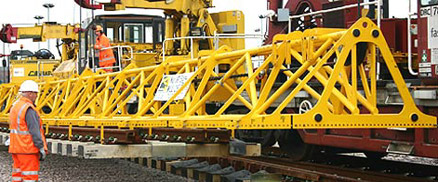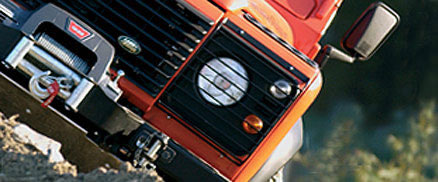April 21st, 2011
Falls are a leading cause of deaths in the workplace but can always be avoided if all the correct safety precautions are taken.
Whilst the majority of falls occur in the construction industry, they do occur in other workplaces where people have been known to fall off roofs, ladders, through openings in floors or walls and from scaffolds.
If there is any possibility of your staff being exposed to the possibility of a dangerous or fatal fall then you need to provide training.
There are various health and safety procedures which must be followed with regards to supplying hand rails and guard rails and the wearing of hard hats, harnesses and other safety equipment.
A comprehensive training programme will teach you and your staff all about the correct health and safety procedures and equipment you need to utilise. It will also ensure all equipment is used correctly and any avoidable dangers are avoided.
Fall Protection Training should include:
Recognising Potential Workplace Hazards.
If you are responsible for safety in your workplace then you should carefully inspect all working areas and take note of any potential hazards. After deciding on potential risks you should try to minimise them as much as possible.
Fall Protection Training
All employees who use gall protection equipment should receive extensive training, Ensure that your staff understand how to use all safety equipment and have practiced using it. If your staff are using harnesses, Lanyards and other equipment they should receive training that qualifies them to inspect their equipment before they begin work. Training will also introduce them to working at height, which can be a very different experience from working at ground level.
Any fall protection training should also inform your staff about CE standards and test requirements and give staff an overview of legislation, regulations and codes of practice surrounding fall protection safety.
As well as the official training you and your staff should have, you need to encourage them to use their common sense and develop a strong sense of safety. It’s often when we let our guards down that accidents happen so encourage your staff to keep vigilant and always be aware of their own safety and the safety of those around them.
Tags: fall protection safety, fall protection training
Posted in Arbil Lifting Gear |
April 21st, 2011
Hydraulic Jacks are used in railway maintenance for lifting rail carriages and rails. Hydraulic Jacks need to be checked and tested regularly to ensure that they adhere to all safety conditions and are working to the best of their ability. If you use hydraulic jacks in rail maintenance you need to ensure that they are tested and inspected and that all results are officially recorded.
Inspection
During inspection the jack is inspected for any physical damage such as missing, broken or fractured parts and also for any oil leaks.
If the external appearance of the jack appears to be damaged then it is stripped down and carefully examined internally.
The lifting and lowering mechanism is checked and the hydraulic oil level is measured. If there is a problem that can be fixed repairs are carried out and the jack is then re checked.
Testing
Hydraulic Jacks need to be regularly and rigorously tested. During the testing process the jack is operated to its full extension and receives 25% more pressure than what is considered a safe working load.
This load is maintained for 15 minutes, after which time the release valve is activated and the jack is lowered and carefully inspected again.
This process is then repeated at half extension. If an overload valve is fitted this is then reset at between 5% and 10% over the safe working load and the jack re-tested at its safe working load as outlined above.
A load of 1% of the Jacks safe working load is then applied to ensure the jack fully retracts from its maximum to minimum height within an acceptable time frame.
When working within the railway industry safety is of the upmost importance. Hydraulic Jacks and other maintenance equipment should be very carefully checked under agreed conditions on a regular basis.
Those carrying out safety checks should be well trained and fully qualified and all results should be carefully recorded to ensure that there is a clear record of any safety issues which may arise during checking.
Hydraulic Jacks are an important part of railway maintenance and ensuring that all hydraulic jacks used meet safety requirements is an essential part of maintaining safe railways.
Tags: hydraulic jacks, rail equipment, rail safety, railway maintenance
Posted in Arbil Rail |
April 21st, 2011
Railways have been an essential part of the infrastructure of most western countries for several decades. In the UK, railways are used constantly to transport people and goods and are essential to the economic well being of the country.
However, few people realise how much work goes into keeping our vast network of railway tracks safe and well maintained. There are several elements involved in track maintenance. Here’s a quick guide to track maintenance and safety:
Railway tracks need to be cleaned regularly but several of the methods used can cause damage. For example excessive cleaning of tracks can cause scratching and can attract more dust to settle.
Metals that are used for tracks need to go through a series of processes before they are ready such as heating and cooling processes. It is only once they have been carefully treated that they are ready to be used as train tracks.
The ballast of the track (the space between the rails and the ties) should be smooth to ensure that the rails are parallel. If the ballast is not smooth it can cause uneven or disrupted rail tracks.
General wear and tear can be a problem and needs to be carefully monitored.
Rails should be securely attached. If they are too loose they can cause the rail wheel to ‘bounce back’ which can result in an extremely bumpy journey or even derailment.
There are several ways to carry cleaning and safety equipment along train tracks, for example rail skates.
Rail skates can be used individually or in pairs and clip on attachments can be fitted to increase the carrying capacity.
Keeping rail tracks clean and safe requires immense precision and skill. There are several types of safety equipment that need to be involved in the process, and various machinery which can help with the job.
Railway track maintenance is extremely important for both passengers and goods and performing the correct safety assessments can prevent catastrophes from happening. Professional railroad contractors and professional railroad safety equipment providers help to ensure that the UK’s vast network of tracks is kept safe.
Posted in Arbil Rail |
April 21st, 2011
Off Roading can be a fantastic and exciting experience, but just as there are rules of the road in towns and cities, there are rules that apply to off roading. Most of these rules are designed to keep you safe and you can be sure that if you follow them it can only make your off roading experience more enjoyable. So follow these simple off roading rules and make sure that you stay safe while you have the time of your life.
- Stay right to avoid oncoming traffic. If there is only room for one vehicle to pass then it’s generally the more experienced driver who should give way – but use your common sense
- When two vehicles meet on a hill and there is no safe place to pull over then the vehicle going up the hill has the right of way.
- When driving your goal should be to have as little impact on the environment as possible
- Keep the driver’s side of the vehicle close to any obstacles when driving through, but don’t forget to keep an eye on the rest of the car.
- Heavily used tracks can cause your undercarriage to get stuck. Try driving with one wheel on the middle hump if you find this is happening.
- When driving in mud, snow or deep sand, deflate your tyres slightly, this will give them a greater surface area and therefore more grip. Don’t forget to re inflate them when you are finished.
- Approach obstacles such as ditches at an angle. That way one wheel can tackle the obstacle while the other three remain on solid ground.
- If you encounter large rocks or boulders then consider whether you will need to build a ramp in order to cross them
- Think about the kind of safety equipment you might need to take such as a self recovery winch
- If you know you will be in an area where there will be few other people about you may need equipment like this.
Remember to always consider your safety and the safety of your passengers and other road users when off roading to ensure that you have fantastic fun but remain safe.
Tags: 4x4, off roading, self recovery winch
Posted in Arbil 4x4 |
April 21st, 2011
Safari Snorkels were first introduced in Australia in the 1980’s. They were created as a response to the increased popularity of touring and off roading in four wheel drives. The Safari Snorkel helps protect 4×4 engines from sand, dust and water that might be encountered on an excursion.
Since the 1980’s Safari Snorkels have been thoroughly researched and finely homed to make any 4×4 experience more enjoyable and more worry free.
Safari Snorkels are always manufactured to the highest standards and in cross linked, UV stable polyethylene material. They deliver a constant cool air supply to ensure maximum engine performance. Each Safari Snorkel comes with quality fixtures and fittings for superior sealing, presentation and durability.
Why Do I Need A Safari Snorkel?
If you love off roading adventure then you’ll know a high performance 4×4 can make or break your experience. You want your excursion to be as exciting and challenging as possible. A Safari Snorkel will allow you to travel over dusty and sandy terrain and through water without causing damage to your engine or harming your car’s power or performance.
If you use your 4×4 for work then you’ll know how important it is to maintain a healthy, happy car. With a snorkel you can rest assured that you can put your 4×4 through the mill and still come out smiling on the other side.
Safari Snorkels are a great choice when you are travelling in rainy conditions. All Safari Charge Air Rams feature a fantastic water separator system that is built to remove rain from the incoming air stream, meaning you can carry on driving through even the most torrential downpour.
The Safari Snorkel is even great in the snow. The clever design means that the snorkel can be rotated away from the prevailing wing in a snow storm so that your engine is protected from the choking effects of air build up in the air intake.
So choose a safari snorkel if you want to make the most of your 4×4 and offroad through every season, every type of weather and every type of terrain, safe in the knowledge that your engine is being protected.
Tags: 4x4, off roading, safari snorkel
Posted in Arbil 4x4 |


